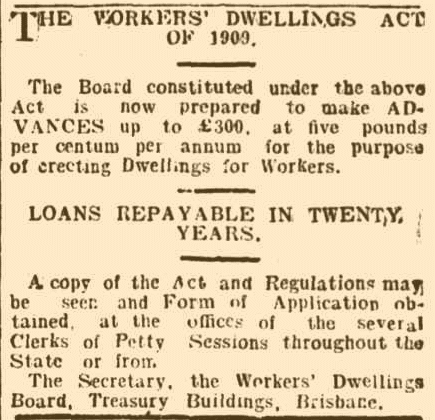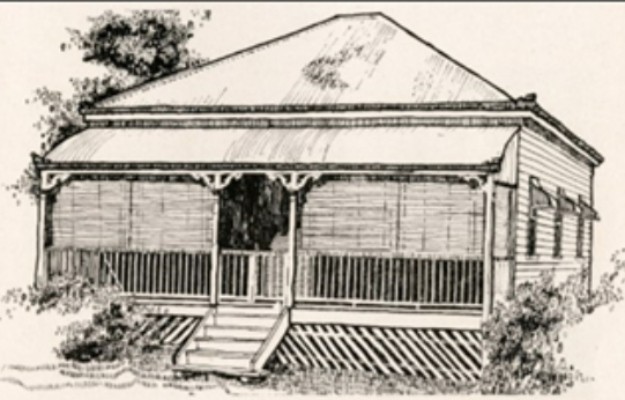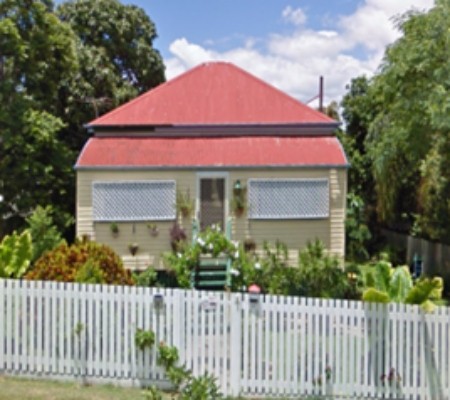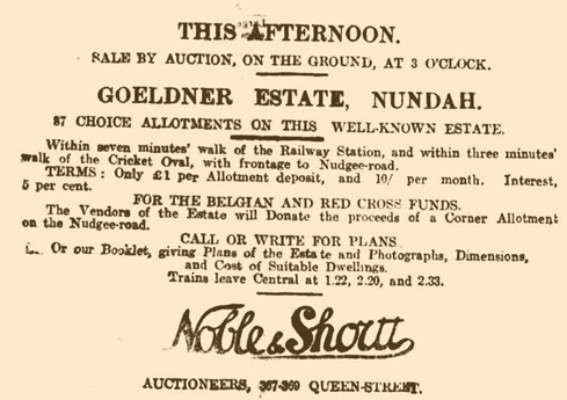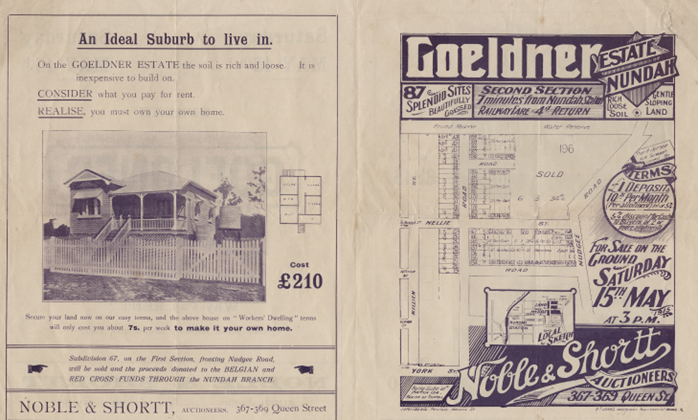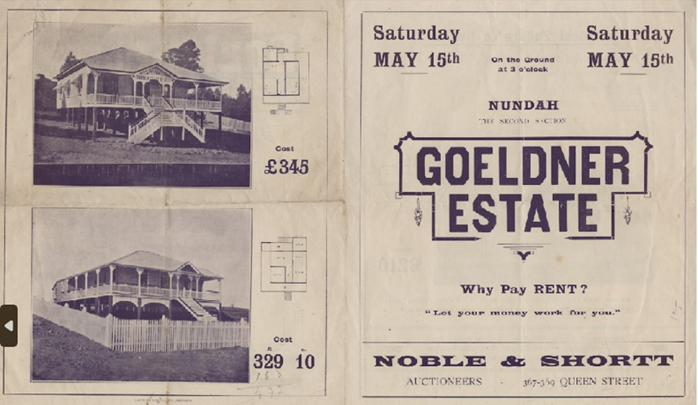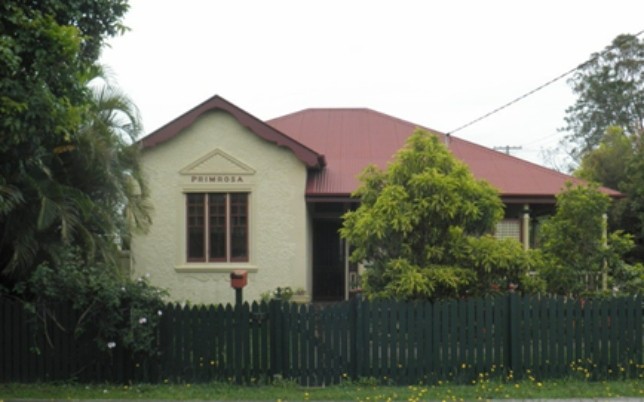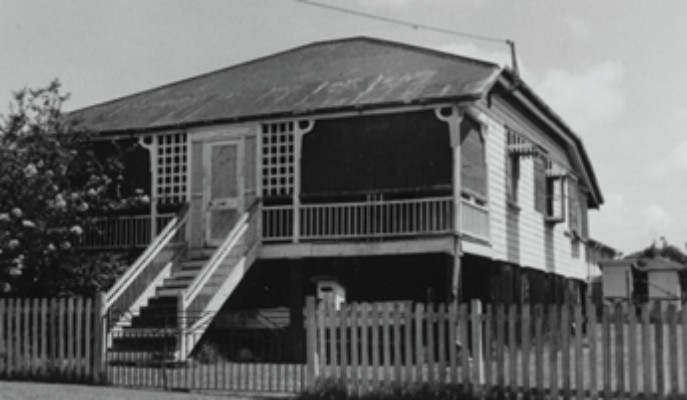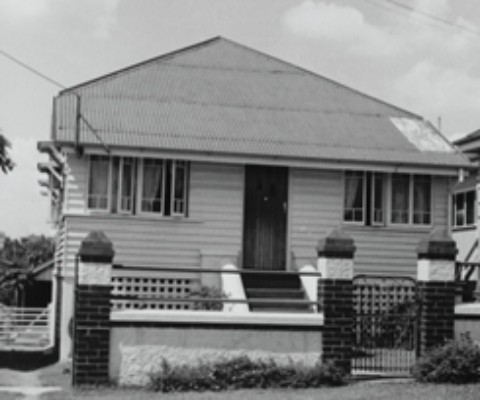Early 20th Century Queensland Government support for workers to get an affordable home
By Stephanie Ryan, Research Librarian, Library and Content Services | 15 November 2023
In 1909, the Government in Queensland was the first in Australia to enable cheap, accessible housing for the working man. They believed it encouraged a stable family life and workforce as well as sensible money management. It ensured that the housing was not only affordable but also of good quality, adequately maintained and the government investment protected.
The first house, at a total cost of £220, was built on the Goeldner Estate, Nundah in 1910. It’s uncomplicated design and simple, attractive embellishments provided a model for many more homes in the area. It remains today in Surrey Street, heritage listed.
In 1915 when there was a further release of the Goeldner Estate, the attraction of the Workers’ Dwellings Home Scheme to those who had purchased their own block of land was not lost on the real estate agents. Advertisements for the estate appeared at frequent intervals in newspapers. The features mentioned appealed to the values which were then current: closeness to the railway station, important when few had private transport; proximity to entertainment and exercise, the cricket oval; reasonable rates of purchase, particularly valued during the war years. There were also the enticing details of prospective new homes. The auctioneers also supported the high patriotic fervour of the time by donating the sale of a block of land to the Belgian and Red Cross funds.
The plans referred to in the advertisements were real estate maps showing the streets involved and the size of the block of land as well as a local sketch which put the area in context. They were also called lithographs or lithos, a reference to how these plans were created. What made this real estate map so different was that it featured three of the designs from which applicants could choose under this thrifty Workers’ Dwellings Scheme. The dream of a new home took on an achievable, visual form.
Over time styles diversified. In 1912, York Street Nundah, plasterer Joseph Edwards, using Workers’ Dwellings Scheme funding, built a home which reflected his skilled trade. The brick house with a rendered plaster finish and decorative detail, Primarosa, stands out as different. It was also a recognizable style with its projecting gable and two-sided verandah, front and side, features which were becoming popular.
These homes marked the beginning of a scheme which changed and became more flexible. It enabled decent homes for workers which, over time, included a wider group of the employed.
Unsurprisingly, workers’ cottages spread throughout the suburb, but have been affected by recent redevelopment. The Frank and Eunice Corley House Photographs captures a number of these in late 1960s-early 1970s which is when Frank Corley took photographs of homes in South-East Queensland. He sold them to residents in cardboard frames featuring a calendar and household hints or in a frame with a greetings message. Those he did not sell he kept, so that he did not have to pay sales tax on them. After his death the leftover photographs came to State Library and have been digitised and may be found on One Search. At that time many such homes were either deteriorating, their heritage value unrecognised, or had been enclosed to accommodate baby boomer families, making the Frank and Eunice Corley House Photographs all the more important in documenting house histories.
There are still a number of houses throughout the Frank and Eunice Corley House Photographs which remain unidentified. Can you provide an address and some background to some in your area? In Advanced search in One Search use the street or suburb name, Corley and select the option – images on the right side of the search box.
Find out more about the scheme
-
Read Judy Gale Rechner’s thesis Houses for Queenslanders of small means? Workers’ dwellings in old Coorparoo Shire 1910-1940 She explains how the workers’ dwellings scheme operated and argues that what she discovered in Coorparoo applied across Brisbane.
-
Consult her book Brisbane house styles 1880 to 1940 : a guide to the affordable house
-
Building communities : celebrating the achievements of the Queensland Housing Commission 1945-2003 includes an overview of Queensland Government supported housing.
-
Check One Search using the term “Queensland Housing Commission” to find a wider selection of plans, many online.
More information
One Search catalogue – https://onesearch.slq.qld.gov.auopen_in_new
Library membership – https://www.slq.qld.gov.au/services/membership
Ask a librarian - https://www.slq.qld.gov.au/services/ask-librarian
Plan your visit – https://www.slq.qld.gov.au/visit
Comments
Your email address will not be published.
We welcome relevant, respectful comments.
